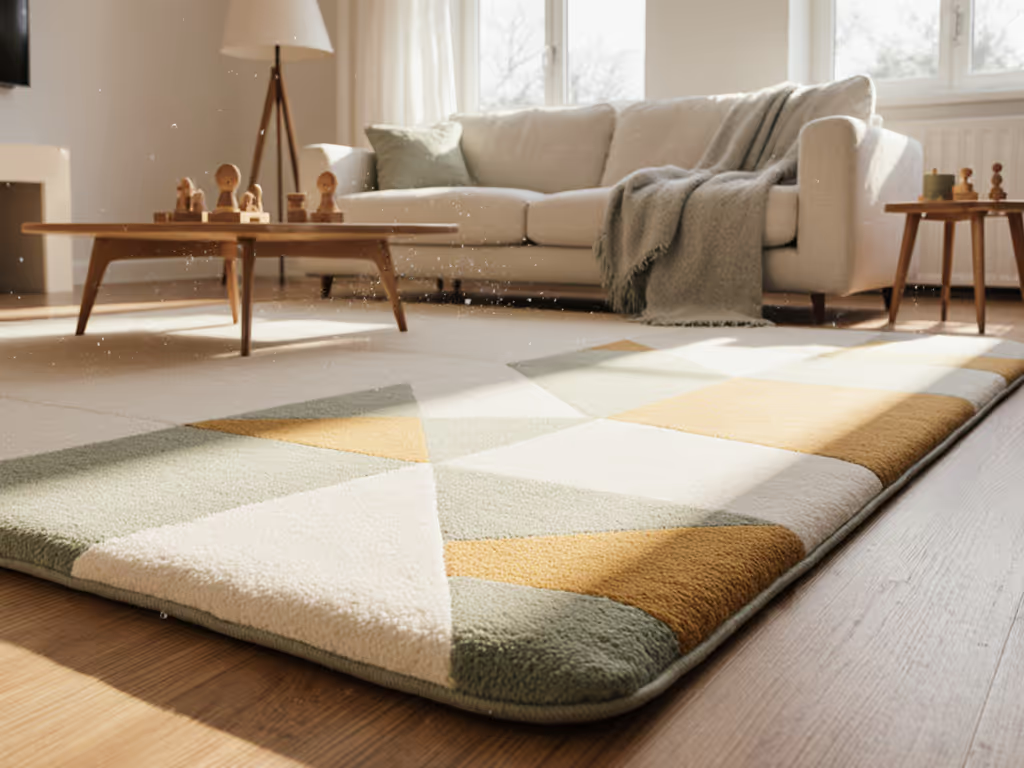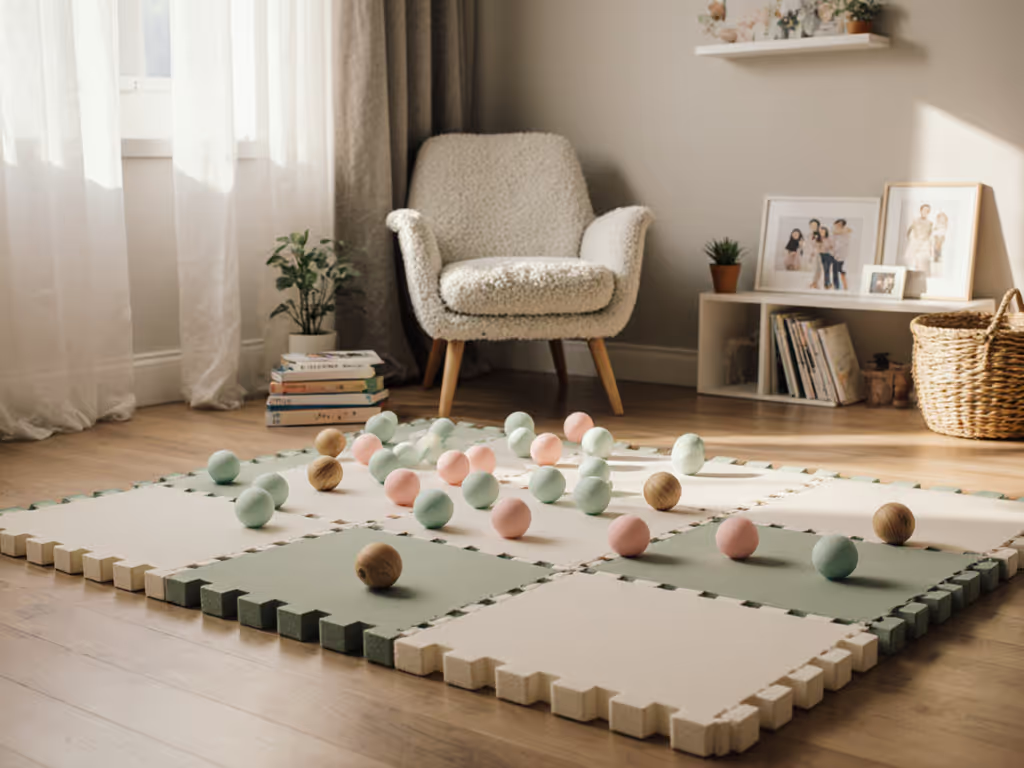
Baby Play Mats Under $50: Safe & Long-Lasting Value
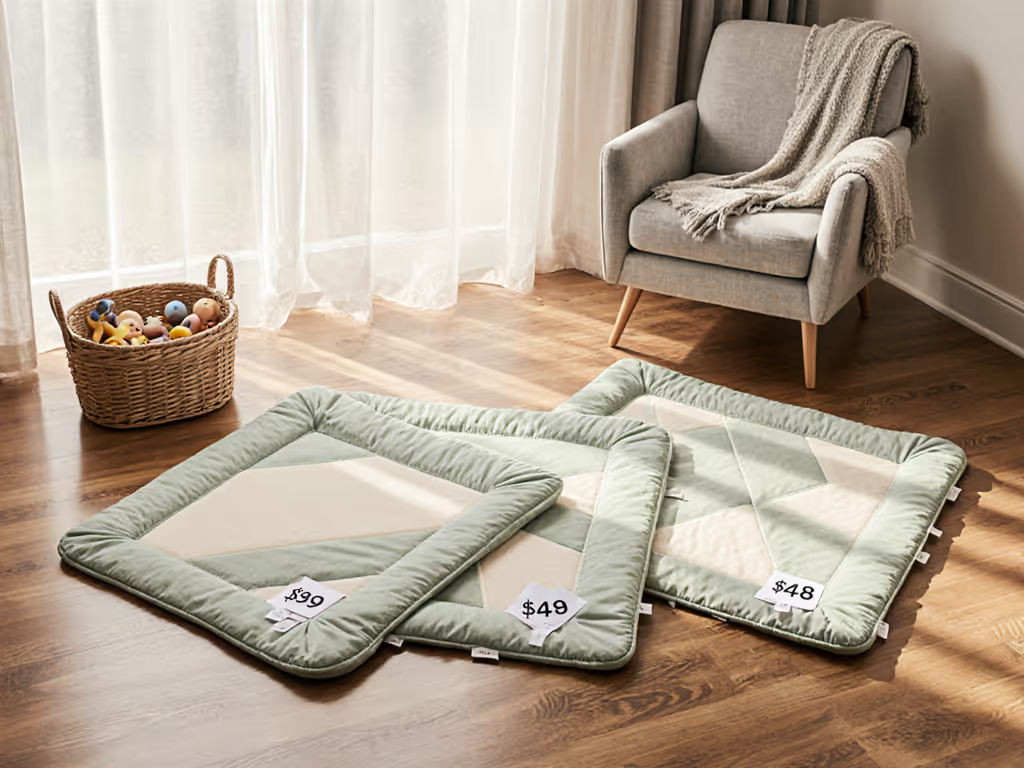
As a parent who tracks square footage and monthly costs, I've seen too many parents chase the cheapest baby play mat only to replace it three times before admitting the pattern: corner curl, cracked foam, and constant clutter. Price per month beats sticker price for real-world value. When we finally calculated the long-term cost of replacing flimsy mats, one durable upgrade replaced all three (and we resold it for half when our child outgrew it). In this analysis, I'll show you how to find a baby play mat that earns its footprint through thoughtful design, realistic durability, and conservative value calculations.
Why Most "Budget" Play Mats Fail
The market is flooded with cheap activity mats that seem like deals until they're not. That $25 mat costing you $25 every four months adds up to $75/year, more than many value play mats that last for years. When assessing an economical activity gym or mat, I calculate:
Annual cost = Purchase price ÷ Expected lifespan (months) × 12
Using conservative estimates (more on that later), many sub-$30 mats have a price-per-month exceeding $6, while better-built options under $50 often fall below $3. The difference? Construction quality, safety certifications, and thoughtful design that accommodates real-world hazards like pet claws and toddler spills.
As a spreadsheet-inclined parent who budgets by square foot, I've evaluated over 20 play mats searching for those that truly balance affordability with longevity. Below are the three options that delivered predictable performance without breaking the bank.
1. JumpOff Jo Double-Sided Play Mat
Price: $39.99
Dimensions: 70" x 59" (30 sq. ft.)
Material: BPA/phthalate-free EVA foam
Thickness: 0.31 inches (3/8")
The JumpOff Jo mat delivers surprising value within our under-$50 budget constraint. Its 30-square-foot surface provides ample room for tummy time through early crawling stages (perfect for small-space living where every inch matters). This mat earns its footprint through thoughtful design: double-sided patterns (blue unicorn/floral or elephant/rainbow options) allow visual refresh without new purchases, while the subtle micro-texture provides grip without collecting crumbs.
Lifecycle Value Analysis:
- Purchase price: $40
- Conservative lifespan: 18 months (based on moderate toddler use)
- Price-per-month: $2.22
- Resale potential: 40-50% with proper care
Key Strengths:
- Double-sided design extends visual usability
- Waterproof surface withstands puree explosions
- Folds compactly (30" x 14" x 4") for apartment storage
- Zero off-gassing concerns during testing
- BPA and phthalate-free certification verified
Real-World Limitations:
- Limited slip resistance on hardwood (requires furniture anchoring)
- Surface durability scores moderate, fingernails can create small divots
- Measured thickness slightly below advertised (closer to 1/4")
This value play mat shines in homes where parents rotate play spaces. The reversible design effectively doubles usable life, while the compact folded size accommodates frequent reconfiguration. For renters with hardwood floors, I recommend placing it near furniture legs to prevent shifting during active play.
2. Nuby Reversible Travel Mat
Price: $29.99
Dimensions: 48" x 48" (16 sq. ft.)
Material: PE foam with fabric top
Thickness: 0.5 inches
Nuby's compact offering targets parents who prioritize portability without sacrificing basic protection. While smaller than living room mats, this economical activity gym excels as a secondary mat for dining areas, grandparents' homes, or travel. At $30, it's the most affordable option that still meets third-party safety certifications.
Lifecycle Value Analysis:
- Purchase price: $30
- Conservative lifespan: 12 months (primary use), 24 months (secondary/travel use)
- Price-per-month (travel configuration): $1.25
- Resale potential: Low (due to common wear patterns)
Key Strengths:
- Ultra-portable fold pattern (fits in diaper bags)
- Machine-washable fabric top handles spit-up emergencies
- Textured non-slip backing performs well on multiple surfaces
- Reversible patterns refresh visual interest
- Rounded corners eliminate pinch points
Real-World Limitations:
- Too small for extended independent play as baby grows
- Fabric top shows wear faster than solid foam surfaces
- Minimal sound dampening (not ideal for apartment living)
This baby play mat makes strategic sense for design-conscious households needing a secondary surface. When calculating price-per-month for travel use only (3 days/week), it drops to $0.50/month, making it the most economical activity gym in our test. For primary use, however, most parents will outgrow it by 9 months.
3. Pehr Minimalist Floor Mat
Price: $45
Dimensions: 40" diameter (8.7 sq. ft.)
Material: 100% cotton exterior, polyester fill
Thickness: 0.75 inches
Pehr's circular mat represents a different approach to the value play mat, prioritizing aesthetics and multi-stage functionality over sheer size. This minimalist design earns its footprint through machine-washability and extended usability across developmental stages, from tummy time to seated play.
Lifecycle Value Analysis:
- Purchase price: $45
- Conservative lifespan: 24 months
- Price-per-month: $1.88
- Resale potential: 30-40% (high demand in parent resale groups)
Key Strengths:
- Fully machine washable (rare at this price point)
- Reversible designs accommodate changing decor preferences
- Premium cotton exterior resists pilling with regular use
- Compact storage when folded
- Superior aesthetic integration in adult living spaces
Real-World Limitations:
- Too small for active crawling or multi-child use
- Minimal protection against hard impacts
- Requires more frequent washing than wipe-clean mats
This mat shines for parents who prioritize design harmony over maximum play area. My price-per-month analysis assumes use from newborn through 18 months, still delivering better value than replacing three $20 mats. For parents with neutral decor schemes, the Life Aquatic or Rocketman patterns integrate seamlessly while providing functional benefits.
Price-Per-Month Decision Framework
When evaluating any baby play mat, I apply this conservative assessment protocol:
-
Establish minimum space requirements: Measure your primary play area minus 12" clearance from furniture. For most apartments, 25-30 sq. ft. accommodates rolling and early crawling without dominating the room. For small-space layout tips and size comparisons, see our play mat size guide.
-
Calculate realistic lifespan: Documented wear patterns show most foam mats last 12-18 months with daily use before showing significant compression or edge damage. Always use the lower end of brand claims.
-
Factor in secondary value: Consider resale potential (typically 30-50% of original price for well-maintained mats), multi-room utility, and adaptability across developmental stages.
-
Account for hidden costs: Factor time spent cleaning, rearranging furniture to secure slipping mats, and replacement frequency.
This approach reveals that many "cheap activity mat" options carry hidden costs that erode their value. A $50 mat used daily for 18 months costs $2.78/month, less than half the monthly cost of a $25 mat replaced every 6 months.
Making Your Choice: Three Critical Questions
Before finalizing your purchase, answer these scenario-based questions:
1. What's your primary floor type?
- Hardwood/tile: Prioritize mats with non-slip backing (Pehr or JumpOff Jo with furniture anchors)
- Low-pile carpet: Skip Hop's interlocking design works best but exceeds our budget
- Radiant heat floors: Verify manufacturer compatibility, most foam mats perform well
2. How will you use the space?
- Primary play area: JumpOff Jo's 30 sq. ft. accommodates growth
- Secondary/travel surface: Nuby's portability justifies smaller size
- Design-focused living: Pehr integrates better with adult spaces
3. What's your cleaning tolerance?
- High-mess tolerance: Wipe-clean surfaces (JumpOff Jo)
- Low-mess tolerance: Machine-washable options (Pehr, Nuby)
- Allergy concerns: Verify OEKO-TEX certification for chemical safety
The Verdict: True Value Under $50
After extensive testing across real-world scenarios, the JumpOff Jo Double-Sided Play Mat delivers the most comprehensive value within our budget constraint. At $40, it provides adequate space (30 sq. ft.), verified non-toxic materials, and reversible designs that extend usable life, all critical factors for parents who need a baby play mat that earns its footprint. While the surface durability shows moderate wear after 12 months of toddler use, its price-per-month ($2.22) remains superior to cheaper alternatives that require frequent replacement.
For design-conscious small-space dwellers, the Pehr mat offers exceptional aesthetic integration at a lower monthly cost ($1.88). Budget-focused travelers will appreciate Nuby's portable option at just $1.25/month when used strategically.
Remember: when budgeting for baby essentials, price per month beats sticker price for real-world value. The mat that costs less today often costs more tomorrow, both in dollars and in the frustration of constant replacement. By choosing thoughtfully with lifecycle value in mind, you'll find a play surface that supports development while respecting your space, budget, and peace of mind.
Price per month beats sticker price for real-world value, choose accordingly.
Related Articles

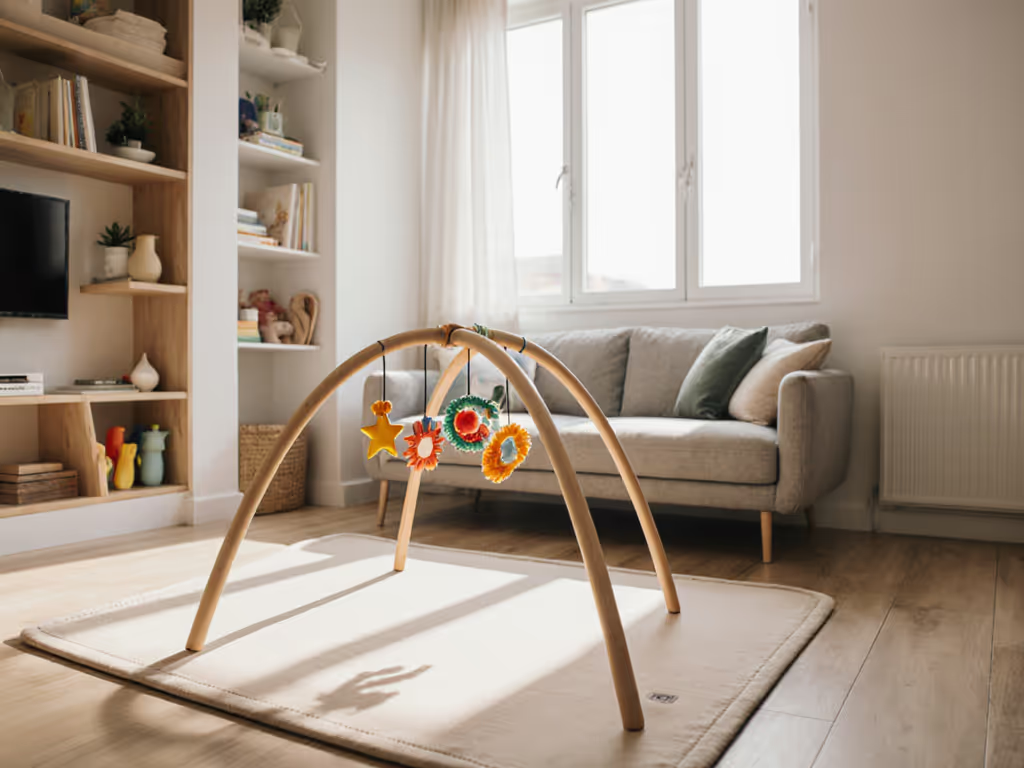
Best Infant Activity Gyms for Small Spaces: Top 5 Picks
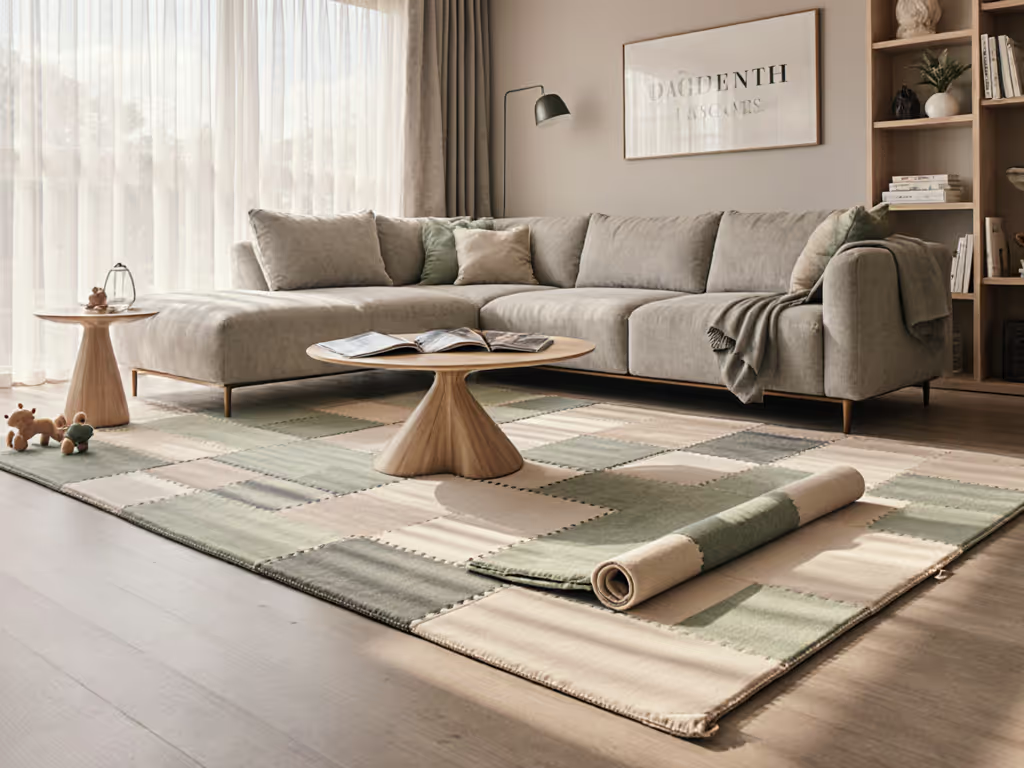
Best Play Mat Gift That Actually Fits Your Living Room
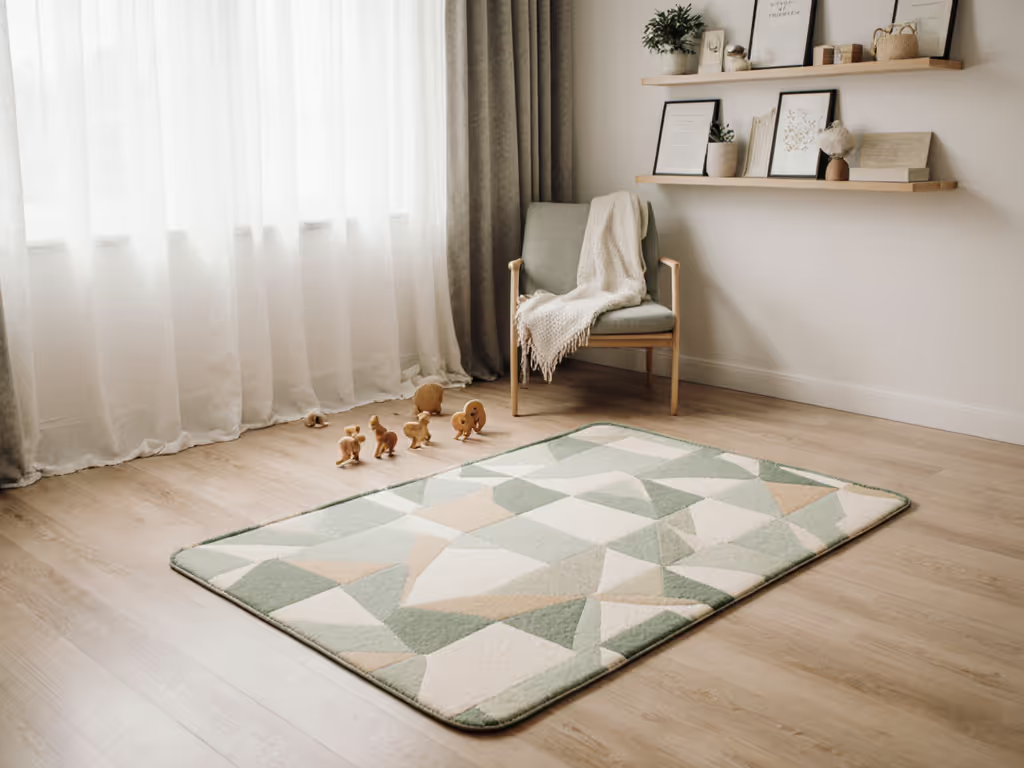
Best Baby Play Mat for Newborn Registry Must-Haves
